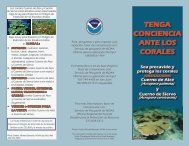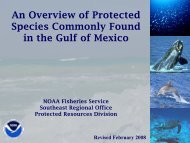NOAA Technical Memorandum NMFS-SEFSC-xxx
NOAA Technical Memorandum NMFS-SEFSC-xxx
NOAA Technical Memorandum NMFS-SEFSC-xxx
Create successful ePaper yourself
Turn your PDF publications into a flip-book with our unique Google optimized e-Paper software.
Site EffectsIn a second ANOVA model which treated sites separately, significant differenceswere found between sites (ANOVA Table 3, p LD A. palmata > Montastraea spp.) was consistent acrosssites.The size structure of the population reflects the host and site trends (Fig. 13), butalso shows that the larger mean length of snails on LD A. palmata at FR is due to arelatively high number of large individuals (rather than a shift in mode length),uncharacteristic of snails inhabiting LD A. palmata stands.DISCUSSION:Previous work, along with our initial survey indicated that Acropora palmatapopulations in the Florida Keys were likely in a remnant state at the beginning of thecurrent study (Dustan and Halas 1987, Jaap et al. 1988, Porter and Meier 1992). It isclear that A. palmata populations in the upper Florida Keys have undergone furtherdecline since 1998, likely the combined result of the 1998 severe bleaching episode andHurricane Georges. Several measured parameters as well as informal observationssuggest that some recovery from this major disturbance has occurred between 1999 and2001. For example, the average estimated proportion of live surface for standingcolonies had resumed its 1998 level by 2001 (Fig. 4). Also, snail densities appear to havepeaked and begun to decline by 2001 (Fig. 6). Observations of individual A. palmatabranches at Little Grecian and Horseshoe reefs from which small tissue samples had beencollected for population genetic analysis showed vigorous growth during summer 2001(Miller & Baums, pers. obs.).In contrast, the more comprehensive parameters which we calculated to representthe total amount of A. palmata at the fully censused sites do not show this clear recoverypattern. The total number of A. palmata colonies (including fragments) and the total LAI8



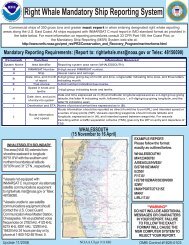

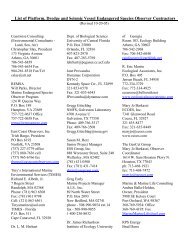
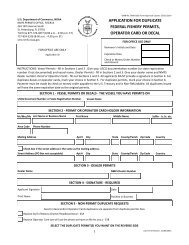
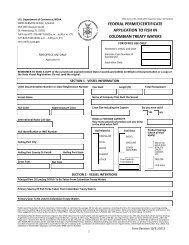
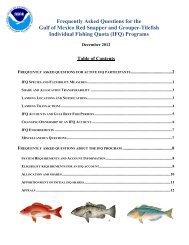
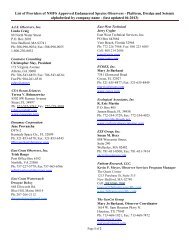
![Right Whale Fact Sheet [PDF] - Southeast Regional Office - NOAA](https://img.yumpu.com/28432664/1/190x245/right-whale-fact-sheet-pdf-southeast-regional-office-noaa.jpg?quality=85)

